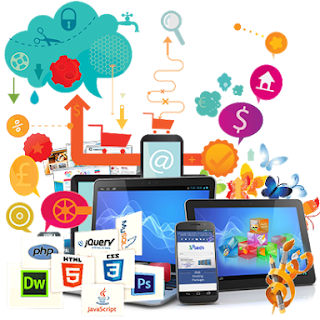Web design (Tools and technologies)


Web designers use a variety of different tools depending on what part of the production process they are involved in. These tools are updated over time by newer standards and software but the principles behind them remain the same. Web designers use both vector and raster graphics editors to create web-formatted imagery or design prototypes. Technologies used to create websites include W3C standards like HTML and CSS, which can be hand-coded or generated by WYSIWYG editing software. Other tools web designers might use include mark up validators and other testing tools for usability and accessibility to ensure their websites meet web accessibility guidelines.
Skills and techniques


User experience design and interactive design
User understanding of the content of a website often depends on user understanding of how the website works. This is part of the user experience design. User experience is related to layout, clear instructions and labeling on a website. How well a user understands how they can interact on a site may also depend on the interactive design of the site. If a user perceives the usefulness of the website, they are more likely to continue using it. Users who are skilled and well versed with website use may find a more distinctive, yet less intuitive or less user-friendly website interface useful nonetheless. However, users with less experience are less likely to see the advantages or usefulness of a less intuitive website interface. This drives the trend for a more universal user experience and ease of access to accommodate as many users as possible regardless of user skill.[10] Much of the user experience design and interactive design are considered in the user interface design.
Advanced interactive functions may require plug-ins if not advanced coding language skills. Choosing whether or not to use interactivity that requires plug-ins is a critical decision in user experience design. If the plug-in doesn't come pre-installed with most browsers, there's a risk that the user will have neither the know how or the patience to install a plug-in just to access the content. If the function requires advanced coding language skills, it may be too costly in either time or money to code compared to the amount of enhancement the function will add to the user experience. There's also a risk that advanced interactivity may be incompatible with older browsers or hardware configurations. Publishing a function that doesn't work reliably is potentially worse for the user experience than making no attempt. It depends on the target audience if it's likely to be needed or worth any risks.
Page layout
Part of the user interface design is affected by the quality of the page layout. For example, a designer may consider whether the site's page layout should remain consistent on different pages when designing the layout. Page pixel width may also be considered vital for aligning objects in the layout design. The most popular fixed-width websites generally have the same set width to match the current most popular browser window, at the current most popular screen resolution, on the current most popular monitor size. Most pages are also center-aligned for concerns of aesthetics on larger screens.
Fluid layouts increased in popularity around 2000 as an alternative to HTML-table-based layouts and grid-based design in both page layout design principle and in coding technique, but were very slow to be adopted.[note 1] This was due to considerations of screen reading devices and varying windows sizes which designers have no control over. Accordingly, a design may be broken down into units (sidebars, content blocks, embedded advertising areas, navigation areas) that are sent to the browser and which will be fitted into the display window by the browser, as best it can. As the browser does recognize the details of the reader's screen (window size, font size relative to window etc.) the browser can make user-specific layout adjustments to fluid layouts, but not fixed-width layouts. Although such a display may often change the relative position of major content units, sidebars may be displaced below body text rather than to the side of it. This is a more flexible display than a hard-coded grid-based layout that doesn't fit the device window. In particular, the relative position of content blocks may change while leaving the content within the block unaffected. This also minimizes the user's need to horizontally scroll the page.
Responsive Web Design is a newer approach, based on CSS3, and a deeper level of per-device specification within the page's stylesheet through an enhanced use of the CSS
@media rule.











Really good information you have shared...i learned new things that you have mentioned.thank you. Low Cost Website Design Company
ReplyDeletethanks
ReplyDelete